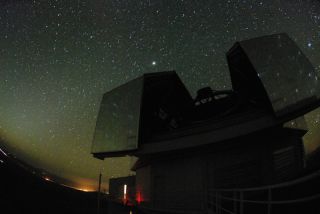 In a discovery decades in the making, scientists have detected the first of a “theoretical” class of stars first proposed in 1975 by physicist Kip Thorne and astronomer Anna Żytkow. Thorne-Żytkow objects (TŻOs) are hybrids of red supergiant and neutron stars that superficially resemble normal red supergiants, such as Betelgeuse in the constellation Orion. They differ, however, in their distinct chemical signatures that result from unique activity in their stellar interiors.
In a discovery decades in the making, scientists have detected the first of a “theoretical” class of stars first proposed in 1975 by physicist Kip Thorne and astronomer Anna Żytkow. Thorne-Żytkow objects (TŻOs) are hybrids of red supergiant and neutron stars that superficially resemble normal red supergiants, such as Betelgeuse in the constellation Orion. They differ, however, in their distinct chemical signatures that result from unique activity in their stellar interiors.
TŻOs are thought to be formed by the interaction of two massive stars―a red supergiant and a neutron star formed during a supernova explosion―in a close binary system. While the exact mechanism is uncertain, the most commonly held theory suggests that, during the evolutionary interaction of the two stars, the much more massive red supergiant essentially swallows the neutron star, which spirals into the core of the red supergiant.
Read the joint press release from CU-Boulder and Lowell Observatory

